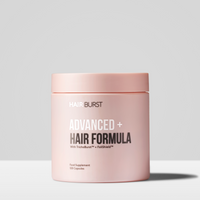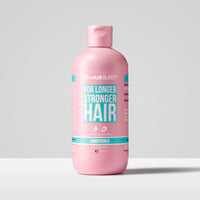What Is Hair Porosity And Why You Need To Know It
Hair porosity is a buzz word that has been thrown around a lot in the past year or so. With lockdown after lockdown giving us more time to focus on our hair and skin, we learnt so much about how to take care of our individual needs. But it can all get confusing and very overwhelming. We are here to simplify the latest buzzword, Hair Porosity.
By definition, hair porosity means the hairs ability to absorb and retain moisture. There are three categories of porosity that your hair can fall into.
These are:
Low Porosity, which is when the cuticles are close together. This makes it very difficult for hair to absorb moisture, as most products tend to coat the outer layer rather than be absorbed by the strand.
Medium Porosity, which is when the cuticles are less tightly bound and typically the ideal porosity for your hair. It allows moisture in but keeps water out.
High Porosity, which is when the cuticles are widely spaced and is usually found on damaged weaker hair.
The cuticle is the outermost layer of your hair, it’s the protective barrier of the strand and it’s formed similarly to fish scales, in the sense that they overlap. The level (or category) of porosity affects how well oils and moisture can pass in and out of the cuticle to penetrate the strand. However certain hair types like curly hair may be impacted by porosity more than others due to a lack of moisture. It’s very individual but often hair porosity is hereditary. Having said that, over time your hair porosity can change due to heat damage, chemical treatments and general damage.
The Hair Porosity Test:
To determine your hair’s porosity levels there are two tests you can do at home!
The first is the Float Test. To do this, take a couple of strands of hair, either from your brush or a fresh strand, and drop them into a bowl of water. Wait 3 minutes for the hair to sit in the water. If after 3 minutes your hair floats, you have low porosity. However if it sinks, you have high porosity.
The other test is the Slide Test. For this test you need a strand of hair and all you have to do is simply slide your fingers up towards the root. Pay attention to how the hair feels, if you can feel little bumps along the strand of hair, this means that your cuticle is lifted and that you have high porosity. If your fingers slip smoothly, then you have low porosity hair.
Knowing your hair porosity type is essential for knowing which products will work best for you. Low porosity hair requires conditioners that are rich in emollients such as shea butter, jojoba oil, coconut oil and mineral oil. Whereas highly porous hair needs a lot more conditioner. We recommend using leave-in conditioners. Don't be afraid to use more than one moisturising product as these products will help your hair hold on to the moisture you're giving it.
Recent posts

Is Cold Rinsing Worth It..
Or can we keep our hot showers?! Over the years cold rinsing has come in and ...

What Causes Hair Breakage And How To Avoid It?
Hair breakage can happen for many different reasons and sometimes it’s not wh...

Introducing Our Brand New Shampoo and Conditioners
Our original Shampoo and Conditioner are already loved by our customers wh...







 hairburst
hairburst